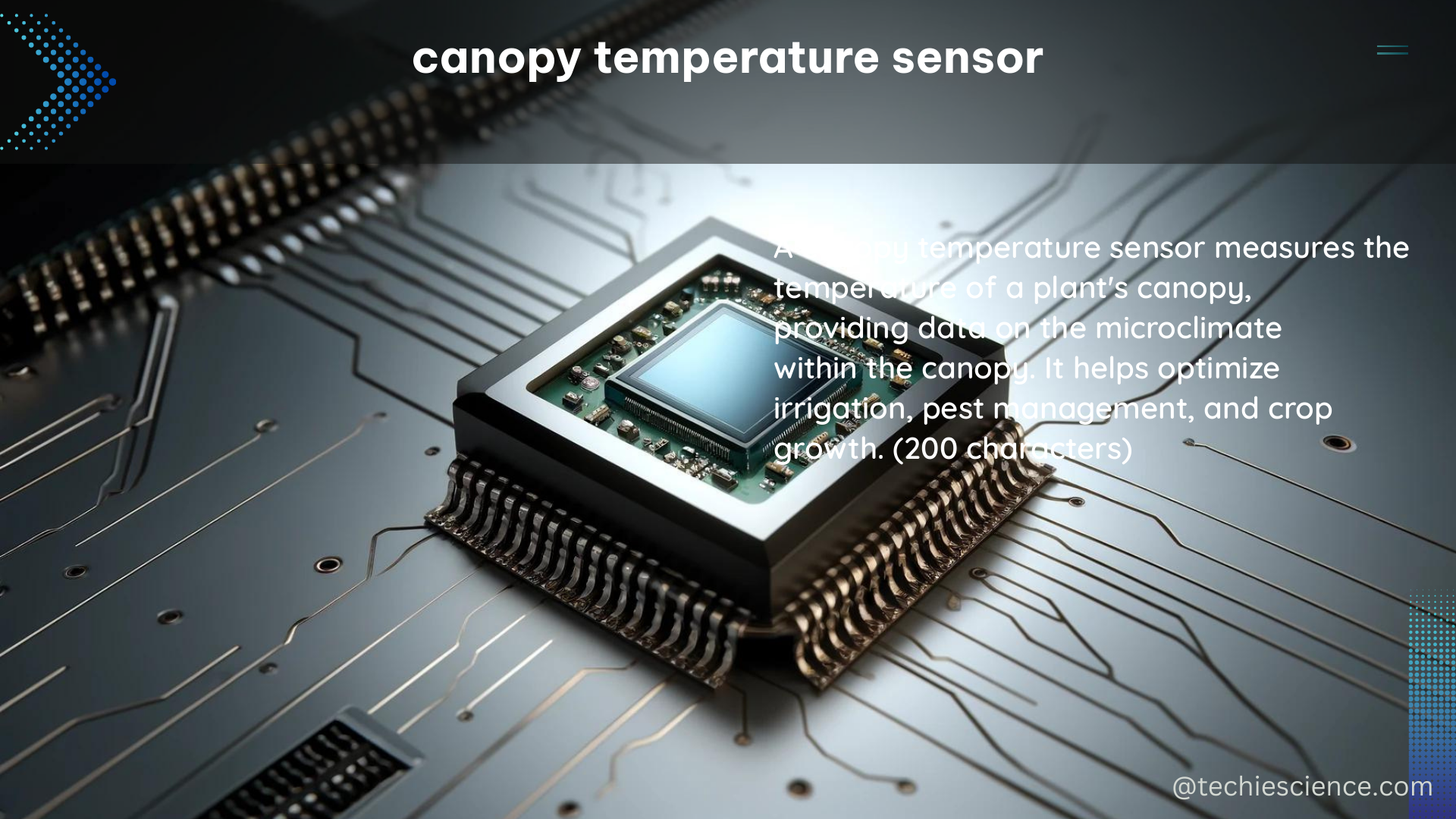The canopy temperature sensor is a crucial tool for measuring the temperature of a plant’s canopy, providing valuable insights into the plant’s water status, transpiration rate, and drought resistance. This comprehensive guide will delve into the technical specifications, measurable data, and practical applications of canopy temperature sensors, equipping you with the knowledge to effectively utilize this technology in your plant-related endeavors.
Understanding Canopy Temperature Sensors
Canopy temperature sensors work by detecting the long-wave infrared radiation emitted by the plant canopy and converting it into an electrical signal that can be displayed as temperature. These sensors are designed to provide accurate and reliable measurements, with the angle of view ranging from 2 to 5 degrees, which determines the size of the measured target area based on the distance between the sensor and the target.
To ensure accurate and consistent measurements, it is crucial to position and maintain the sensor at a fixed distance and angle from the target canopy. Factors such as sensor height, tilt angle, and environmental conditions can all impact the accuracy of the measurements.
Measurable and Quantifiable Data

Canopy temperature sensors can provide a wealth of measurable and quantifiable data that can be used to assess a plant’s water status, transpiration rate, and drought resistance.
Correlation with Plant Water Status
One study found that the correlation between canopy temperature and plant water status becomes stronger as the plant’s water status is reduced, with measurements typically made under well-developed drought stress during the vegetative growth stage. The study reported a strong negative correlation between canopy temperature and relative water content (RWC) across diverse wheat and rice genotypes.
Canopy Temperature and Drought Resistance
In plant breeding and selection for drought resistance, relatively lower canopy temperature in drought-stressed crop plants indicates a better capacity for taking up soil moisture and maintaining transpiration, gas exchange, and yield under stress conditions. Canopy temperature has been found to be negatively correlated with visual ratings of drought stress in selection work.
Measurement Protocols and Accuracy
A study using a low-cost image-based thermal sensor to measure crop canopy temperature in a pomegranate orchard under a permanent shade net house found that the original thermal sensor measurement protocol had an R2 value of 0.978, while an alternative optimization protocol had an R2 value of 0.977. This demonstrates the importance of the measurement protocol in ensuring accurate and reliable data.
DIY Canopy Temperature Sensors
In addition to commercially available canopy temperature sensors, there are also DIY options that can be effective in assessing plant water status. One study found that a low-cost thermal camera and smartphone-based system can accurately assess grapevine water status, with a measurement time of 126-139 seconds. However, the study did not provide detailed technical specifications for the sensor used.
When considering a DIY canopy temperature sensor, it is important to carefully evaluate the sensor’s performance, accuracy, and reliability to ensure that it meets your specific needs. This may require additional research and development to optimize the sensor’s performance.
Conclusion
Canopy temperature sensors are a powerful tool for measuring the temperature of a plant’s canopy, providing valuable insights into the plant’s water status, transpiration rate, and drought resistance. By understanding the technical specifications, measurable data, and practical applications of these sensors, you can effectively utilize this technology to support your plant-related endeavors, whether in research, agriculture, or horticulture.
References
- Giménez-Gallego, J., González-Teruel, J.D., Blaya-Ros, P.J., Toledo-Moreo, A.B., Domingo-Miguel, R., & Torres-Sánchez, R. (2023). Automatic Crop Canopy Temperature Measurement Using a Low-Cost Image-Based Thermal Sensor: Application in a Pomegranate Orchard under a Permanent Shade Net House. Sensors, 23(6), 2915.
- Skewes, M.A., Whitty, M.A., & Blum, A. (2019). The accuracy and utility of a low cost thermal camera and smartphone-based system to assess grapevine water status. Biosystems Engineering, 179, 126-139.
- Blum, A. (n.d.). Leaf Canopy temperature – plant stress. Retrieved from https://plantstress.com/leaf-canopy-temperature/.

The lambdageeks.com Core SME Team is a group of experienced subject matter experts from diverse scientific and technical fields including Physics, Chemistry, Technology,Electronics & Electrical Engineering, Automotive, Mechanical Engineering. Our team collaborates to create high-quality, well-researched articles on a wide range of science and technology topics for the lambdageeks.com website.
All Our Senior SME are having more than 7 Years of experience in the respective fields . They are either Working Industry Professionals or assocaited With different Universities. Refer Our Authors Page to get to know About our Core SMEs.